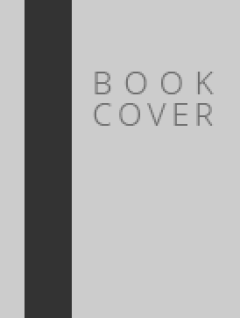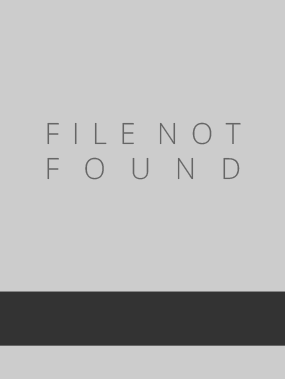Ditapis dengan

Essentials of Anatomy and Physiology
Anatomy is the scientific discipline that investigates the structure of the body. Physiology is the scientific discipline that deals with the processes or functions of living things.
- Edisi
- Edisi 4
- ISBN/ISSN
- 0-07-027260-3
- Deskripsi Fisik
- xx, 644 hlm. : il. ; 27,5 cm.
- Judul Seri
- -
- No. Panggil
- 612 ROD e

Human Anatomy and Physiology
- Edisi
- Second Edition
- ISBN/ISSN
- 0-8053-6980-5
- Deskripsi Fisik
- xx, 794 hlm. : il ; 27,5 cm.
- Judul Seri
- -
- No. Panggil
- 612 ALE h
- Edisi
- Second Edition
- ISBN/ISSN
- 0-8053-6980-5
- Deskripsi Fisik
- xx, 794 hlm. : il ; 27,5 cm.
- Judul Seri
- -
- No. Panggil
- 612 ALE h

Anatomy and Physiology
Contents: 1. The Body As A Whole 2. Support and Movement 3. Communication, Control, and Integration 4. Transportation and Defense 5. Respiration, Nutrition, and Excretion 6. Reproduction and Development
- Edisi
- 3ird Edition
- ISBN/ISSN
- 0-8154-8783-1
- Deskripsi Fisik
- xxxv, 1243 hlm. : il. ; 28 cm.
- Judul Seri
- -
- No. Panggil
- 612 GAR a/ed.3

Histology: A Text and Atlas
In recent years a variety of new histology textbooks have been published. In many ways these books are in contrast with the more traditional texts that had been the mainstay for teaching the subject matter of histology over the decades.
- Edisi
- -
- ISBN/ISSN
- 0-06-045602-7
- Deskripsi Fisik
- xvi, 766 hlm.: il.; 23,5 cm
- Judul Seri
- -
- No. Panggil
- 611 MIC h

A Commonsense Guide to Sex, Birth and Babies
The contents: An internal epic of creation, Managing a healthy pregnancy, How a baby is born, Nurture for the firs year of life, The years from one to five, and A range of ills and remedies.
- Edisi
- -
- ISBN/ISSN
- 0-8094-3827-5
- Deskripsi Fisik
- 176 hlm.: il.; 26 cm
- Judul Seri
- -
- No. Panggil
- 612.6 HEN c

Fundamentals of Anatomy and Physiology
The goal of this project has been to produc an introductory level textbook that is clear, accurate, informative, and interesting.
- Edisi
- -
- ISBN/ISSN
- 0-13-444365-9
- Deskripsi Fisik
- xxvii, 945 hlm.: il.; 28,5 cm
- Judul Seri
- -
- No. Panggil
- 612 FRE f

Fundamentals of Anatomy and Physiology
The goal of this project has been to produc an introductory level textbook that is clear, accurate, informative, and interesting.
- Edisi
- Edisi 7
- ISBN/ISSN
- 0-321-31198-1
- Deskripsi Fisik
- xxxviii, 1109 hlm. : il. ; 27,5 cm.
- Judul Seri
- -
- No. Panggil
- 612 FRE f

Human Anatomy
The chapterin unit 1 presents a brief historical review of anatomy. It is concerned with the various cultures, events, and people that made contributions to ar had an impact on the science of anatomy. This unit sets the stage for a modern day study of anatomy by providing a historycal view of anatomy's ancient, exciting, but frequently troubled heritage.
- Edisi
- -
- ISBN/ISSN
- 0-697-04743-1
- Deskripsi Fisik
- xvii, 677 hlm.: il.; 28,2 cm
- Judul Seri
- -
- No. Panggil
- 612 KEN h

At a Glance Embriologi
AAG Embriologi menyajikan prinsip-prinsip dasar perkembangan manusia, mulai dari mitosis dan meiosis, menuju pembentukan masing-masing sistem tubuh, termasuk perkembangan berkelanjutan dari sistem respirasi dan vaskular selama periode fetal dan neonatal.
- Edisi
- -
- ISBN/ISSN
- 978-602-298-306-4
- Deskripsi Fisik
- 120 hlm. : il. ; 28 cm.
- Judul Seri
- -
- No. Panggil
- 611 SAM g

Anatomi dan Fisiologi Modern Untuk Perawat
Buku ini berisikan uraian komprehensif yang memberikan tinjauan lengkap tentang anatomi dan fisiologi, dengan fokus unik pada keadaan sehat dan sakit. Isinya disusun dalam bab-bab yang berhubungan dibicarakan tentang anatomi dan fisiologi dari sistem tubuh tertentu, diikuti dengan prosedur diagnostik umum dan gambaran klinis dari sistem yang dibicarakan.
- Edisi
- Ed. 2, Cet. I
- ISBN/ISSN
- 979-448-272-2
- Deskripsi Fisik
- vii, 332 hlm. : il. ; 24 cm.
- Judul Seri
- -
- No. Panggil
- 612 GIB a/2
 Karya Umum
Karya Umum  Filsafat
Filsafat  Agama
Agama  Ilmu-ilmu Sosial
Ilmu-ilmu Sosial  Bahasa
Bahasa  Ilmu-ilmu Murni
Ilmu-ilmu Murni  Ilmu-ilmu Terapan
Ilmu-ilmu Terapan  Kesenian, Hiburan, dan Olahraga
Kesenian, Hiburan, dan Olahraga  Kesusastraan
Kesusastraan  Geografi dan Sejarah
Geografi dan Sejarah